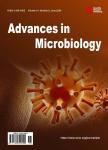Identification of Aflatoxigenic Fungi and Detection of Their Aflatoxin in Red Chilli (<i>Capsicum annuum</i>) Samples Using Direct Cultural Method and HPLC
Identification of Aflatoxigenic Fungi and Detection of Their Aflatoxin in Red Chilli (<i>Capsicum annuum</i>) Samples Using Direct Cultural Method and HPLC作者机构:Industrial Microbiology Laboratory Institute of Food Science and Technology (IFST) Bangladesh Council of Scientific and Industrial Research (BCSIR) Dhanmondi Dhaka Bangladesh Department of Genetics and Biotechnology Noakhali Science and Technology University Noakhali Bangladesh Department of Microbiology Jagganath University Dhaka Bangladesh Food Toxicology Research Laboratory Institute of Food Science and Technology (IFST) Bangladesh Council of Scientific and Industrial Research (BCSIR) Dhanmondi Dhaka Bangladesh
出 版 物:《Advances in Microbiology》 (微生物学(英文))
年 卷 期:2018年第8卷第1期
页 面:42-53页
学科分类:1002[医学-临床医学] 100214[医学-肿瘤学] 10[医学]
主 题:Aflatoxin Aspergillus Detection HPLC Red Chilli
摘 要:Aflatoxins are the potential lethal toxin produced by Aspergillus sp. important health hazard throughout the world. In this study, 26 Aspergillus sp. have been isolated from 50 samples of red chilli collected throughout the country. These 26 isolates were grown primarily on agar media to identify the aflatoxin producing species. It is possible to distinguish A. flavus strains from other Aspergillus sp. developing orange colour on the reverse of the plates. The Coconut Cream Agar (CCA) is used to detect aflatoxin producer strains having blue fluorescence when exposed to a UV-light. Several other media were used for morphological characteristics of Aspergillus sp. Out of 26 isolates, four isolates were confirmed as Aspergillus sp. These isolates were subjected to cross contamination with freshly ground, sterile maize and after 15 days of incubation the contaminated maize were analyzed by HPLC and found aflatoxin in each of the sample containing 186 ppb (max.). This study was conducted to assay the ability to produce aflatoxins by the Aspergillus spp. isolated from red chilli (Capsicum annuum L. Solanaceae) available throughout the country. The results found in the experiment are much more behind the acceptable limit according to some international standard. As red chilli is a widely used spice in Bangladesh, the proper controlling measures may be taken for controlling the surveillance of aflatoxinic fungi like as use of bio-pesticides, proper drying method and storage conditions.



